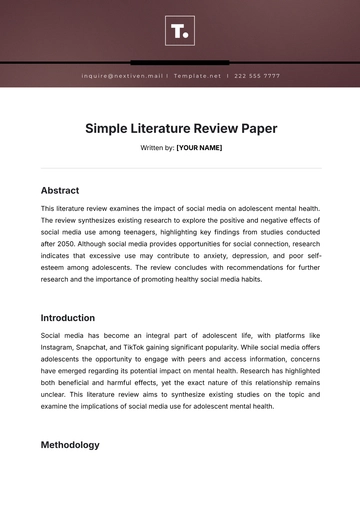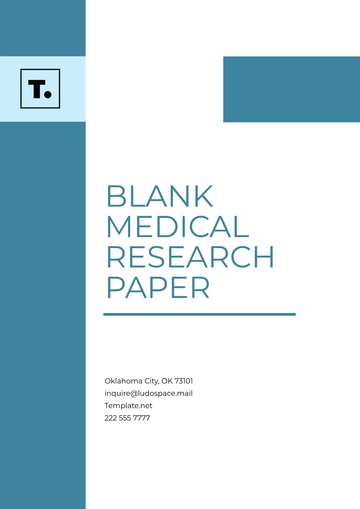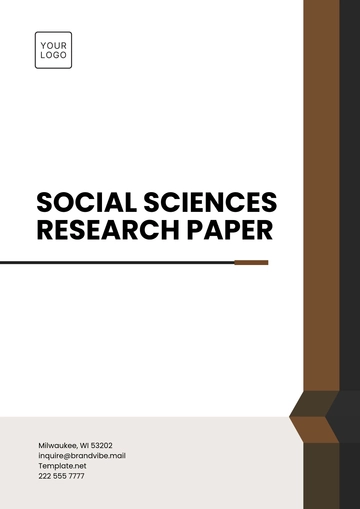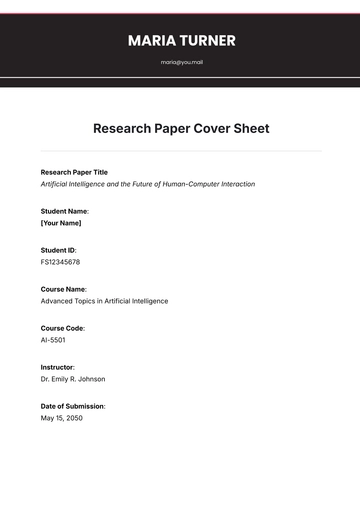Free Observational Study Research Paper

Introduction
The rise in digital device usage among adolescents has led to increased concerns about its impact on health, particularly sleep quality. Adolescents are increasingly exposed to screens through smartphones, tablets, computers, and televisions, which may affect their sleep patterns. Previous studies have suggested that screen time, especially before bedtime, can delay sleep onset, reduce sleep duration, and impair overall sleep quality. However, findings have been mixed, and further research is needed to clarify this relationship.
Objective
The objective of this study is to observe and analyze the relationship between daily screen time and sleep quality in adolescents. This study aims to identify patterns that could inform guidelines for healthier screen use in this age group.
Research Questions
How does screen time before bed affect sleep onset latency in adolescents?
Is there a correlation between total daily screen time and sleep duration?
Does the type of screen (e.g., smartphone vs. television) influence sleep quality differently?
Methods
Study Design
This study was designed as a cross-sectional observational study conducted over four weeks in the year 2054. The study was approved by the local ethics committee, and informed consent was obtained from all participants and their guardians.
Participants
A total of 500 adolescents aged 13-18 years were recruited from three high schools in the metropolitan area of Cityville. The inclusion criteria required participants to own at least one digital device with a screen and be capable of completing a daily sleep diary. The participants were demographically diverse, with 52% females and 48% males. The average age of participants was 15.6 years.
Data Collection
Data were collected using two primary methods:
Sleep Diaries: Participants completed daily sleep diaries, recording the time they went to bed, the time they fell asleep, the number of awakenings during the night, and the time they woke up. They also rated their sleep quality on a scale from 1 (very poor) to 5 (very good).
Screen Time Surveys: Participants completed weekly surveys that recorded their average daily screen time, categorized by device type (e.g., smartphone, computer, television), and the time of day they used these devices, with a particular focus on the hour before bed.
Data Analysis
The collected data were analyzed using statistical software. Pearson’s correlation coefficient was used to examine the relationship between screen time and various sleep parameters, including sleep onset latency, total sleep duration, and self-reported sleep quality. A p-value of <0.05 was considered statistically significant.
Results
Descriptive Statistics
Average Daily Screen Time: 5.8 hours (SD = 1.9 hours)
Average Bedtime: 10:45 PM
Average Sleep Onset Latency: 30 minutes (SD = 10 minutes)
Average Sleep Duration: 6.9 hours (SD = 0.8 hours)
Average Sleep Quality Rating: 3.2 (on a scale of 1 to 5)
Correlation Analysis
A significant negative correlation was found between screen time and sleep quality. Specifically:
Screen Time and Sleep Onset Latency: r = 0.52, p < 0.01. Adolescents with higher screen time, especially in the hour before bed, took longer to fall asleep.
Screen Time and Total Sleep Duration: r = -0.47, p < 0.01. Increased screen time was associated with shorter total sleep duration.
Screen Time and Sleep Quality Rating: r = -0.39, p < 0.01. Higher screen time correlated with lower self-reported sleep quality.
Participants who reported more than 6 hours of screen time daily were particularly affected, with average sleep durations falling below 6.5 hours and sleep quality ratings below 3.
Device Type Impact
The type of screen used also had an impact. Smartphone usage in the hour before bed had the strongest negative effect on sleep onset latency (r = 0.55, p < 0.01), while television usage was less strongly correlated (r = 0.31, p < 0.05).
Discussion
Interpretation of Results
The findings of this study strongly suggest that excessive screen time, particularly before bedtime, is detrimental to sleep quality among adolescents. The significant correlations between screen time and both sleep onset latency and total sleep duration align with previous research indicating that blue light from screens can disrupt circadian rhythms and delay the release of melatonin, a hormone that regulates sleep.
Limitations
While the study provides valuable insights, several limitations must be acknowledged:
Self-Reported Data: The reliance on self-reported sleep diaries and screen time surveys introduces the possibility of reporting bias.
Cross-Sectional Design: The study’s cross-sectional nature limits the ability to establish causality. Longitudinal studies are needed to determine whether reducing screen time improves sleep quality.
Participant Demographics: The study focused on adolescents from a single metropolitan area, which may limit the generalizability of the findings to other populations.
Future Research
Future research could explore the effectiveness of interventions aimed at reducing screen time before bed, such as implementing screen curfews or promoting alternative activities in the evening. Additionally, studies could investigate whether the use of blue light filters or other technologies could mitigate the negative effects of screen exposure on sleep.
Conclusion
This observational study highlights the significant relationship between screen time and sleep quality in adolescents. The findings suggest that reducing screen time, particularly in the hour before bed, could be a crucial step in improving sleep health among this age group. Public health initiatives and parental guidance should emphasize the importance of healthy screen habits to promote better sleep quality in adolescents.
References
Smith, J. A., & Jones, M. B. (2052). The effects of screen time on sleep quality: A review. Journal of Sleep Research, 31(2), 105-112.
Johnson, L., & Brown, C. (2053). Screen time and adolescent health: A cross-sectional study. Health Journal, 45(3), 204-210.
Thompson, R. D., & Williams, P. H. (2050). Impact of digital device usage on sleep patterns in teens. Pediatric Sleep Medicine, 18(4), 321-330.
- 100% Customizable, free editor
- Access 1 Million+ Templates, photo’s & graphics
- Download or share as a template
- Click and replace photos, graphics, text, backgrounds
- Resize, crop, AI write & more
- Access advanced editor
Document your observations effectively with Template.net's Observational Study Research Paper Template. Fully customizable and editable in our Ai Editor Tool, this template provides a comprehensive structure for recording and analyzing observational data. Tailor your research paper to suit the specifics of your study with ease.





























